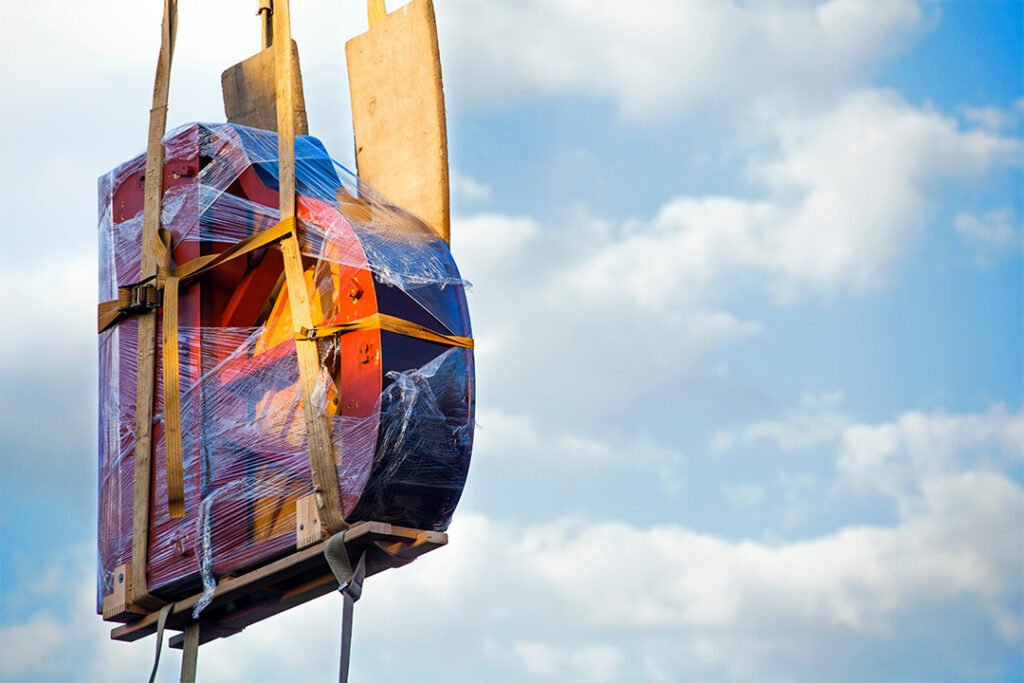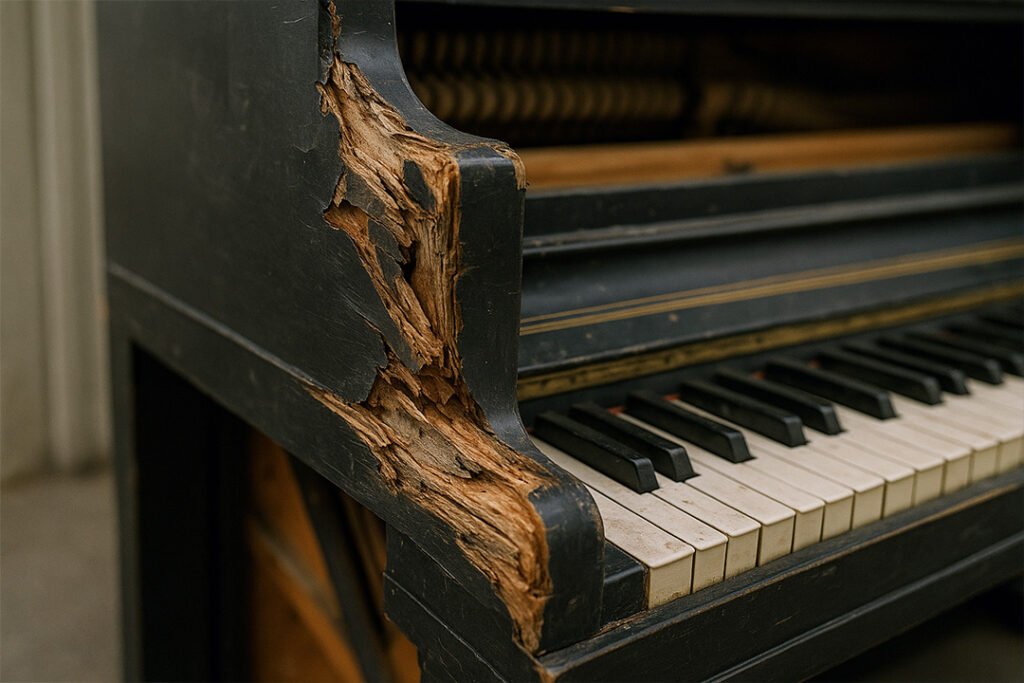
Moving a piano can disrupt its tuning due to changes in string tension and environmental factors. Professional moving and tuning services ensure your piano remains in top condition post-move.
Table of Contents
Introduction to Piano Moving and Tuning
Hello, fellow piano lovers! Have you ever noticed your piano sounding a bit off-key after a move? You’re not alone. Moving a piano is more than just a logistical challenge; it’s about maintaining the beautiful sound you’ve come to love. When you relocate a piano, its internal mechanics can be disrupted, leading to changes in string tension and tuning stability.
Imagine this: you’ve just placed your grand piano in its new spot, eager to play, only to find the notes sounding… not quite right. That’s because moving can really shake things up inside. Environmental changes, especially shifts in humidity and temperature, can further affect the piano’s tuning. This is why pairing the move with a professional tuning session is crucial.
By combining moving and tuning services, you’re not just relocating your piano; you’re ensuring it remains in top condition for your next performance or practice session.
- Moving can unsettle a piano’s internal mechanics, affecting tuning.
- Environmental changes post-move can cause tuning instability.
- Professional moving and tuning preserve sound quality.
How Moving Affects Piano Tuning
Moving a piano isn’t just about getting it from point A to point B; it can significantly impact the instrument’s tuning. During transport, the piano’s internal mechanics, especially the string tension, can be disrupted due to the physical jostling. This can lead to tuning instability, making your piano sound a bit off once it’s settled in its new location.
However, the journey itself isn’t the only factor. Environmental changes are major contributors to tuning issues. When a piano is moved to a new location, it encounters different humidity and temperature levels. These variations can cause the wood and metal components to expand or contract, further affecting the tuning. This is why pianos often need tuning after a move to restore their pitch stability.
To ensure your piano remains in tune, it’s crucial to let it acclimate to its new environment for at least one to two weeks before scheduling a tuning. This waiting period allows the instrument to adjust to any environmental changes, ensuring that the subsequent tuning is effective and long-lasting. Remember, a well-acclimated piano is a well-tuned piano!
- Moving can unsettle a piano’s internal mechanics, affecting string tension.
- Environmental changes (humidity and temperature) are primary causes of tuning instability.
- Allow 1-2 weeks for the piano to acclimate before tuning.
The Importance of Professional Piano Movers
Moving a piano is no small feat, and while it might be tempting to handle it yourself or with the help of friends, hiring professional piano movers is a wise investment. These specialists are equipped with the right tools and expertise to ensure your piano’s safety and tuning stability throughout the move.
Professional movers use specialised equipment like piano dollies, boards, and climate-controlled vehicles to protect your piano from the environmental changes that can cause tuning instability. They are trained to handle the instrument delicately, avoiding sudden movements and impacts that could disrupt the piano’s internal mechanics and affect string tension.
After the move, it’s standard practice for a qualified technician to conduct a thorough inspection and tuning to restore pitch stability and ensure the piano is in optimal condition. This careful handling and post-move care are crucial for maintaining your piano’s health and sound quality.
- Specialised equipment like piano dollies and climate control are used to minimise tuning disruption.
- Movers are trained to prevent sudden movements and impacts that could affect tuning.
- Post-move inspection and tuning by a qualified technician restore pitch stability.
Acclimatisation: A Key Step Before Tuning
You’ve just moved your piano to its new home, and while it’s tempting to get it tuned immediately, patience is key. Acclimatisation is an essential step that allows your piano to adjust to its new environment, particularly to changes in humidity and temperature, which are the primary causes of tuning instability after a move.
Experts recommend waiting at least one to two weeks before scheduling a tuning. This waiting period gives the piano time to settle, ensuring that the tuning will be more stable and effective. During this time, it’s best to avoid playing the piano extensively, as this can interfere with its acclimatisation process. Think of it as letting your piano breathe and get comfortable in its new surroundings.
- Wait 1-2 weeks post-move before tuning.
- Avoid playing the piano extensively during acclimatisation.
- Environmental changes can affect tuning stability.
Scheduling Tuning After a Move
Moving a piano is quite the endeavour, and once it’s safely in its new location, the next step is ensuring it sounds as beautiful as ever. But when should you tune it? Well, patience is key here. After a move, it’s recommended to let your piano acclimate to its new environment for one to two weeks before scheduling a tuning. This period allows the piano to adjust to changes in humidity and temperature, which are significant factors affecting tuning stability.
Once acclimated, you might find that your piano requires multiple tuning sessions to regain its optimal sound. This is because the move can unsettle the piano’s internal mechanics, affecting the tension of the strings. Regular tuning is crucial not just after a move but as part of ongoing maintenance. The Pianoforte Tuners’ Association suggests tuning at least twice a year to maintain the piano’s health and performance. This routine helps preserve the integrity of the soundboard and internal components, ensuring your piano remains in top condition.
- Allow 1-2 weeks for acclimation before tuning post-move
- Multiple tunings may be needed for stability
- Tune at least twice a year for ongoing maintenance
Bundled Services: Moving and Tuning Packages
Imagine moving your piano to a new home and having it sound just as perfect as before. That’s the magic of bundled moving and tuning services. These packages combine the expertise of professional movers with the precision of skilled tuners, ensuring your piano remains in top condition throughout the transition.
Picture this: you’ve just moved your beloved piano to its new home. It’s been jostled about, exposed to different temperatures, and probably feeling a bit out of sorts. Now, wouldn’t it be great if the same folks who moved it could also make sure it’s singing in perfect pitch? That’s where these bundled packages come in. They’re designed to give your piano a seamless transition from point A to point B, and then some TLC to boot. It’s not just convenient; it’s actually really good for your instrument too.
- One-stop solution: Moving and tuning sorted in one go
- Peace of mind: Experts handle your piano from start to finish
- Time-saving: No need to shop around for separate services
- Cost-effective: Often cheaper than booking services separately
- Tailored care: Tuners familiar with the move can address specific issues
- Professional movers use specialised equipment and climate-controlled trucks to minimise disruptions.
- A post-move tuning by a qualified technician helps restore pitch stability and maintain sound quality.
Why does moving affect piano tuning?
Moving affects piano tuning due to physical jostling that disrupts internal mechanics and environmental changes like humidity and temperature variations.
How long should I wait to tune my piano after moving?
It’s recommended to wait 1-2 weeks after moving to allow the piano to acclimate to its new environment before tuning.
Why hire professional piano movers?
Professional movers have the expertise and equipment to safely transport your piano, minimising tuning disruptions and ensuring the instrument’s integrity.
What are bundled moving and tuning services?
Bundled services combine professional moving with tuning, ensuring your piano is moved safely and tuned accurately post-move.


